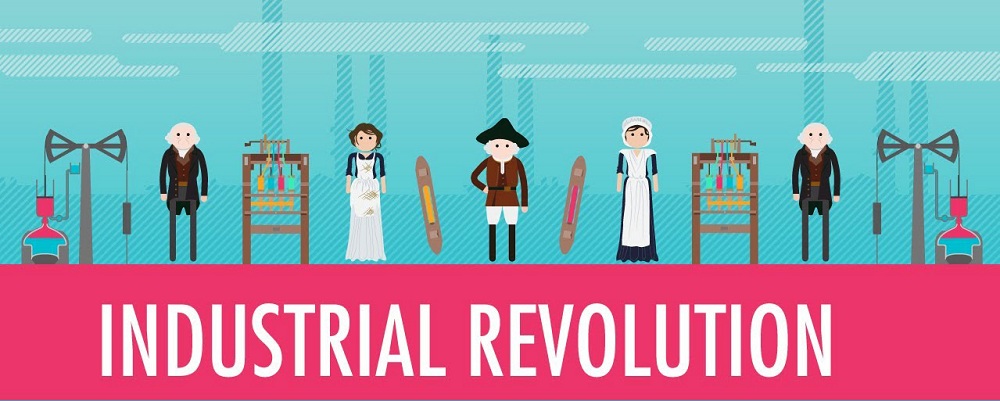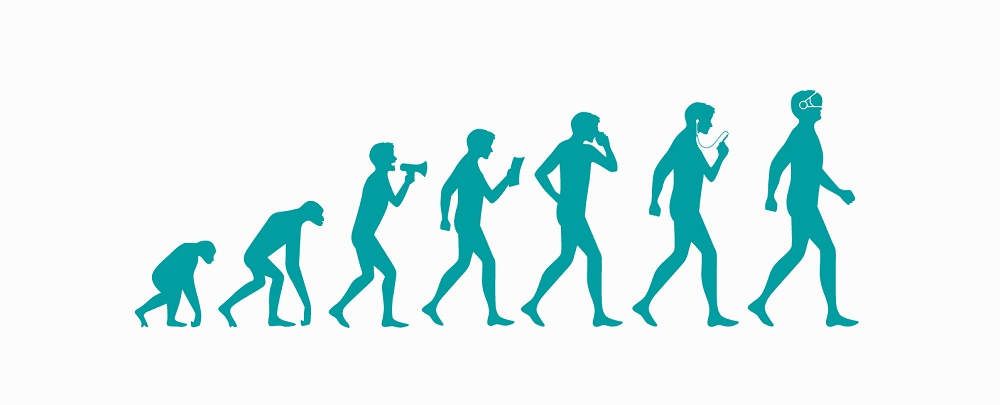As sentient life-forms on a humble blue-green planet, we have all been marketing in several ways, long before we even grasped the concept of Marketing. The term, ‘marketing, is derived from the Latin word, ‘Mercatus’, which means a marketplace.
The practice of marketing has been going on for centuries now, but the definition of the term “marketing” keeps on changing. Commercial marketing for buying and selling products or services became really popular in the late nineteenth century. However, the study of marketing as an academic field emerged in the early twentieth century.
The chief motive of marketing is to catch a targeted prospect’s attention and encourage them to take the action they want. It is of no use if it doesn’t make your target customers to take action. The relations are not constant among human actions because of the axioms of consciousness and free will. All economic phenomena, such as a rise in supply and the fall in price, are the result of human action.
All human action is produced by internally generated and freely chosen goals; particular actions. Action is generated fundamentally by a desire to remove a felt uneasiness. This is axiomatic. Individuals act to attain a better state of affairs than the present state. To catalyze this particular action marketing techniques have been adopted.
“ Marketing, clearly, is as old as human civilization itself.”
Marketing is simply about putting the right product, at the right price, at the right time, in the right place. Up until the entry of the Internet in the market, most marketing was “outbound” – outbound marketing tactics catch a customer’s attention by interrupting what they’re doing. For example tv, newspaper, magazine, and billboard ads as well as direct mail and catalogs.
Once the Internet broke out, inbound marketing became much more affordable – inbound marketing tactics catch a customer’s attention by helping them with what they’re already doing. Think search engine and content marketing that helps prospects find what they’re looking for or something they want or need or make an informed buying decision.
The Different Eras of the Development of Marketing
The reputation and universality of marketing is a reasonably recent phenomenon. The term ‘marketing’ first appeared in the dictionaries in the sixteenth century where it was referred to as the process of buying and selling at a marketplace.
Marketing is a kind of field that is always open to new ideas and new trends. And rightly so marketing has gone through so many eras witnessed all the wars and development all around the world and flourished accordingly. So before we can begin to discuss marketing, we need to understand something about its history and the debates and controversies that have shaped the field.

The Simple Trade Era ( Pre-Industrial Revolution)
In the Simple Trade era, the focus of marketing activity was not only the trade-off between resources as well as study. In the mid-19th era, commodities were a staple in the economy of commerce. This was when everything was produced or harvested manually and had a very limited supply. Here, the main activity was harvesting, hunting, and gathering. In this era, basic commodities ruled the day. Nothing really altered in the field of marketing from the first time humans came out of their caves until the early nineteenth century AKA pre-industrial revolution phase.
The branding was done using animal symbols to signify ownership by farmers on adjoining lands. And the first example of a “trademark” appearing was in the Roman Empire where blacksmiths implemented unique marks in order to differentiate the swords they made for their customers. Everything was produced by hand including harvesting or the production of products for the trade. However, the industrial revolution vanished the Simple Trade Era and introduced a whole new era of marketing, the Production era.

The Production Era
It wasn’t up until the 1860s that mass production practices increased the accessibility of consumer goods through to the 1920s. This was the age where businesses believed in “if you produce it, they’ll buy it” marketing. Brand owners blossomed because there were few options available. The situation remained the same as an effect of the First and Second World Wars where the disruption of the supply chain and prorating of basic items sadly became a way of life.
The production era is termed because the foremost priority of many companies was to reduce the cost of production. Companies believed that sales could be made merely by lowering manufacturing expenses, and in turn, facilitating the cost savings to consumers in the form of lower prices. Regrettably, however, the unsettled economic conditions during the late 1920s through the 1940s caused countless companies to fail even though they had implemented this production-oriented attitude of doing business. As a result, companies looked for other options to facilitate the trade process.
The Sales Era
In the midst of the great depression during which unemployment grew to increase, people started purchasing only what was absolutely necessary. Hence, supply exceeded the demand for almost all the basic products. This resulted in competition for customers which became more and more intense. Here the gravity of the Businesses initiated undertaking aggressive sales tactics to sell or give even a slim advantage to their products, and the usage of heavy public advertising across all available forms of Media became widespread.
The Sales era was literally the era of competition. Businesses could no longer simply sell their mass-produced products. During this era, companies started believing that their sales can be enhanced by using various promotional techniques planned to inform and influence potential customers to purchase their products. The various advertising techniques included newspapers, posters, magazines, and billboards as well.
The Marketing Era
By the 1950s, Production unrelentingly expanded even more quickly than the rise in demand for goods and services, forming a consumer Market and the start of the marketing Era. After World War2 consumers were beginning to get tired of the “Hard to get” tactics that companies implemented to make a sale of their products which they didn’t necessarily require or need. Eventually, businesses realized that simply manufacturing quality products and forceful trade with the customers through attractive Advertising and promotional methods didn’t promise Sales.
In this crucial time companies started to determine what customers need and then manufacture products that actually met those needs. The marketing concept also focused on supporting all functions of the establishments to meet their customers’ needs through superior Products and customer service, as well as realizing a profit to satisfy the customers over the Long Term.
They adopted new methods of advertising as well as radio advertising, TV commercials, and tag lines. During this era, the brand new concept of “Branding” was also discovered. The word brand comes from the term to burn which means burning the impression into someone’s memory.

The Relationship Marketing Era
Relationship marketing takes the concept of marketing one step further by instituting a long-term and satisfactory relationship with the customers in order to harness customer loyalty and encourage repeat purchase of the products produced by the form. The late 1990s witnessed the creation of the customer relationship era, in which organizations tried to strengthen their emphasis on customer satisfaction over time.
The effect has been the establishment of customer relationship management (CRM). Philip Kotler, a well-known author of numerous books on marketing, pointed out the need for customer retention which is evident because the cost of drawing a new customer is valued to be over five times the cost of keeping a current customer pleased. Long-term relations between consumers and companies became a priority. This resulted in consumer trust and trustworthiness, letting them return as permanent customers and maintain a successful business.
Digital Marketing Era
It wasn’t long after the invention of the Internet in the late 1990s the attitude towards engagement began to shift towards even more individualized messaging based on increasing detailed metrics. After the invention of the World-wide-web in 1989, the internet became more user-friendly as a global connecting platform. By 1996, commercialization took over in the Internet making way for dot-com.
The first clickable ad on the internet featured in 1993 in the form of what would be later called a banner ad on Hotwired’s homepage, the first commercial web-based magazine. Hotwired debuted in association with AT&T that took users on a tour of some of the best museums in the world.
This ad proved to be successful enough to earn a click-through rate of 44 percent. In 1995 Yahoo shifted from being a business directory to being a commercial business and the same year Microsoft launched MSN.
This was a concept of charging online advertising fees as it emerged as a new pricing model. There were nearly 25 million active adult users were active over the internet by the end of 1995. In 1997 John Shiple of GeoCities invented pop-up ads which appear in a new window when a website was accessed.
Even before the invention of the World Wide Web, there were few search engines that attempted to organize the internet. As the web grew search engines and web directories were created to track pages on the web and allowed people to find things.

After the emergence of search engines, the concept of Search Engine Optimization came into existence. Early pioneers in this field of SEO began efforts to track online visibility in the mid-1990s. By 1997, algorithms that were used to rank websites were already cracked down and widely known. After the invention of Google in 1998, it led to the concept of search engine placement as a means of reaching online consumers based on a unique and secretive algorithm.
The concept of Pay-Per-Click(PPC) invented by Bill Gross emerged as an online marketing model in 2002 as part of the revamped Google AdWords. PPC rewarded top bidders with prominent placement in general searches with ads placed on more appealing websites. Soon, social networking sites started to form with users engaging with them from all over the world.
Facebook which turned into a social media giant by 2006 formed a partnership with Microsoft to focus on what was known as Advertising Syndication, a strategy presenting relevant ads to Facebook users. In 2007 Facebook allowed ad owners to opt-out of having their ad appear. It also launched ads for business in 2008 which included engagement ads as well. In 2009 advertisers were given the option of targeting ads based on specific demographics. Presently, there are over 2.30 billion monthly active users.
The history of Marketing is a very dynamic one. We can surely expect anything between “revolutionary” and “incredulous”. Any thoughts on the future? Will virtual reality become the new marketing platform for advertising and marketing? Are services going to replace products? Are marketers going to take over the world? Stick around and find more about marketing.
Also, Read the related content
An Overview of The History of Marketing
